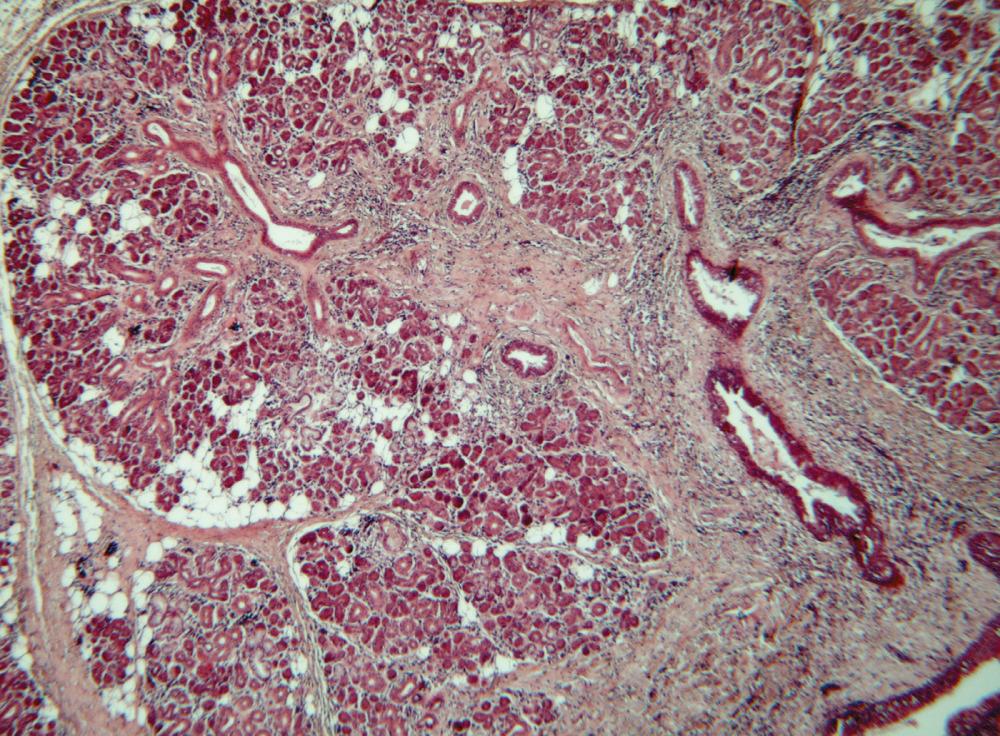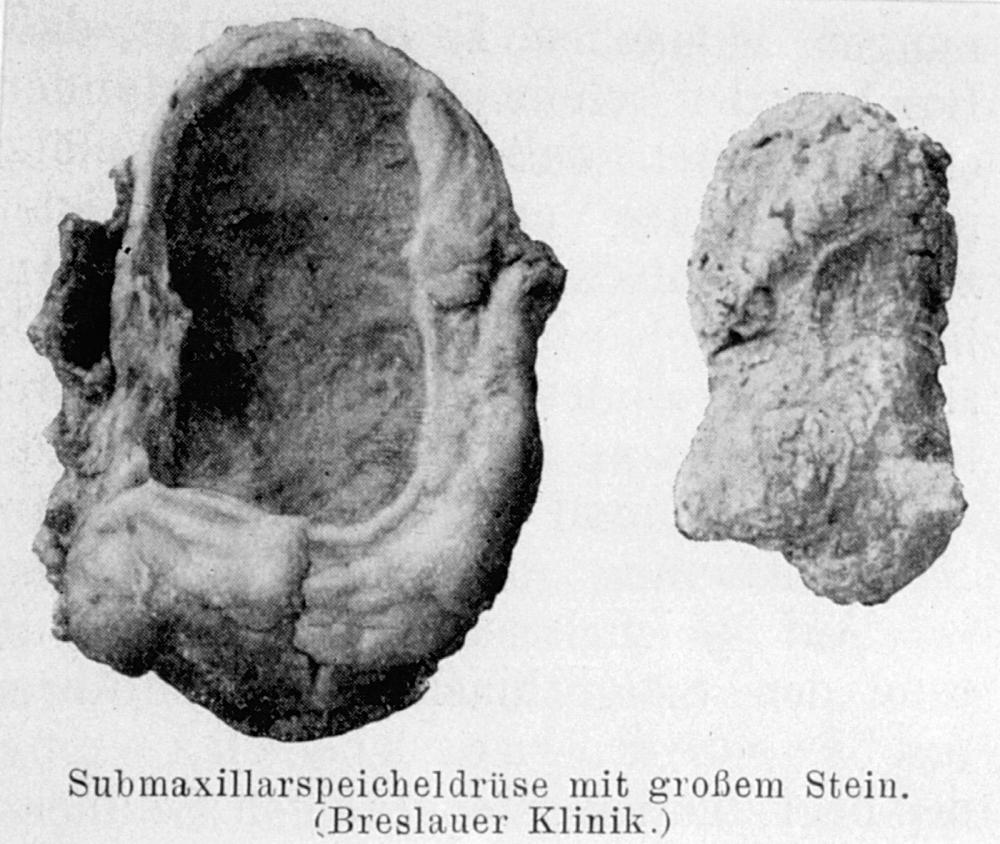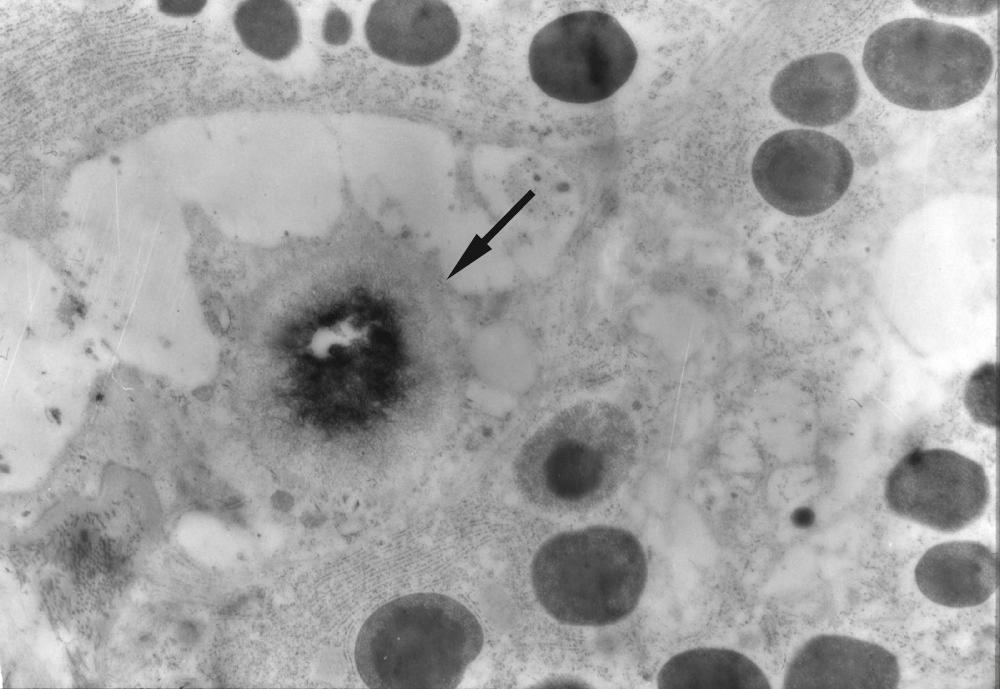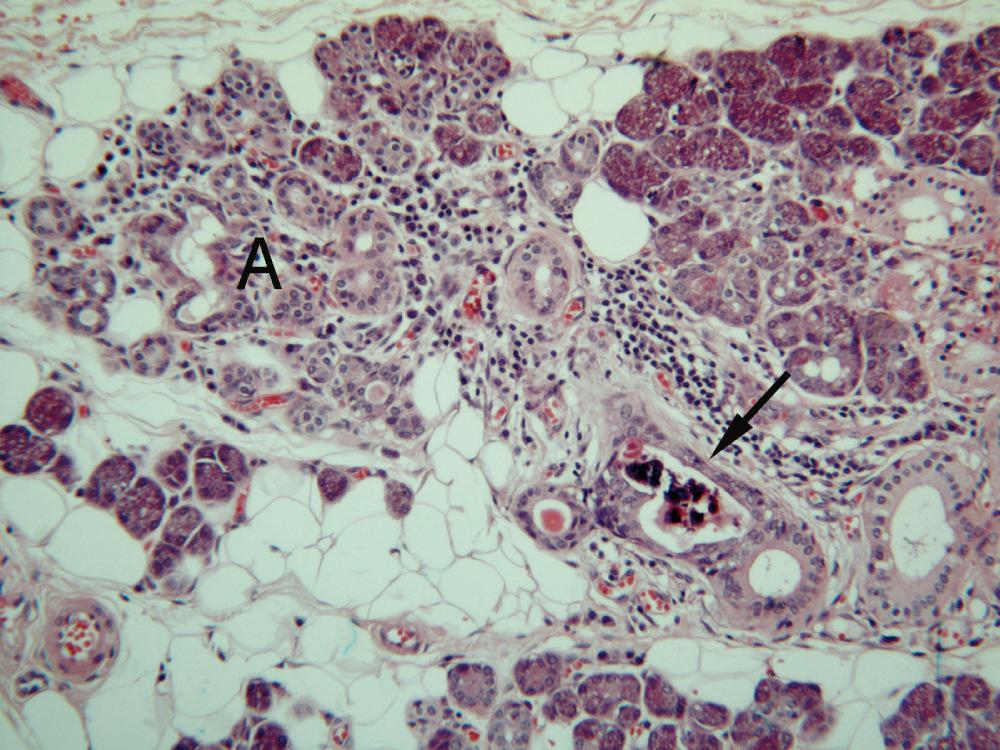Physical Address
304 North Cardinal St.
Dorchester Center, MA 02124
There was a paradigm shift in the understanding of the pathogenesis of sialoliths, also known as salivary calculi, at the turn of the century. This was the result of experimental and clinicopathologic investigations that led to the discovery that sialolithiasis (the presence of a sialolith) was secondary to chronic sialadenitis. Rediscovery, however, would be more appropriate, because this conclusion had been reached in 1896 by Küttner, who described his clinical and microscopic investigations of two patients each with a swollen submandibular gland that had originally attracted a diagnosis of malignancy. He realized that the swellings were caused by chronic inflammation that, together with fibrosis, had led to the clinical appearance of malignancy ( Fig. 10.1 ). He found a sialolith the size of a cherrystone in the gland of one of the patients, who had complained of a submandibular swelling for 10 years. He considered that the sialolith was secondary to the inflammation because the sialolith was far too small for a concretion of 10 years’ accumulation, and because of the absence of a sialolith in the other case, in which the duration was only 1.5 months. Küttner's opinion that chronic sialadenitis is primary and leads to the formation of a sialolith was confirmed by extensive clinical experience ( Fig. 10.2 ).


However, there was negligible appreciation of Küttner's work in the English-language medical literature, in which the notion that the sialolith is primary and the chronic sialadenitis is secondary held sway, although there was no evidence to account for the formation of the sialolith.
One of the clinicopathologic investigations that led to the paradigm shift and the rediscovery that sialolithiasis is secondary to chronic sialadenitis involved 154 cases of chronic submandibular sialadenitis, in which 18 different clinical and histologic features were statistically analyzed. It revealed that there is a chronological progression of increasingly severe chronic sialadenitis with, in many cases, the eventual development of a sialolith.
The search for possible pathogenic factors that could transform a normal gland into a diseased gland led to a postmortem investigation in which microscopic concretions, called sialomicroliths, were found in all normal submandibular glands and 20% of normal parotids. This distribution relates to a higher concentration of ionic calcium in the submandibular gland. Ionic calcium is present to shield the anionic charges of molecules of acidic secretory material and thus to allow them to be condensed into secretory granules. The concentration of calcium thus corresponds to the acidity of the secretory material in the secretory granules. (More details are given in Chapter 5 .)
The realization of the extent of the occurrence of sialomicroliths was only achieved through electronmicroscopy ( Fig. 10.3 ), because many sialomicroliths are indistinguishable from secretory granules lightmicroscopically or are below the level of lightmicroscopic resolution.

Sialomicroliths were occasionally seen obstructing small intraglandular ducts and causing focal obstructive atrophy ( Fig. 10.4 ). This led to the hypothesis that sialomicroliths impact in ducts and accrete to form sialoliths, which led to a search for sialomicroliths in cases of chronic submandibular sialadenitis. They were found in all cases, which appeared to support the hypothesis. However, no relation between sialomicroliths and sialoliths or between sialomicroliths and duration of symptoms in chronic submandibular sialadenitis could be found. This indicated that sialomicroliths are not incipient sialoliths.

Become a Clinical Tree membership for Full access and enjoy Unlimited articles
If you are a member. Log in here